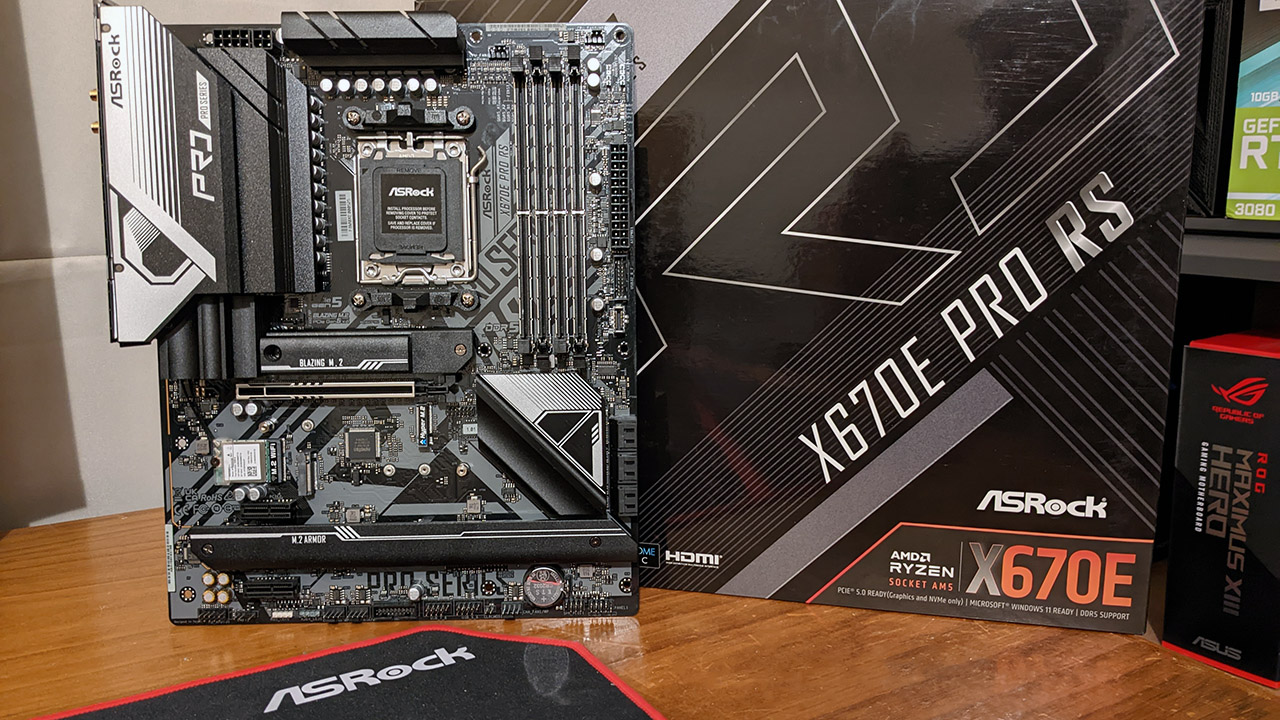Our Verdict
The ASRock X670E Pro RS won’t win ANY popularity contest, but as a no fuss board that delivers the core X670E forward looking feature set, it's a smart option for users on a budget..
For
- Well-priced relative to other X670E boards.
- PCIe 5.0 GPU and M.2 support
- Five M.2 slots
Against
- Unremarkable appearance
- Cheap audio
- B650E boards offer many of the same features
PC Gamer's got your back
There's a lot of exciting hardware coming out right now. AMD, Nvidia, and Intel all have new products for us enthusiasts to salivate over, but there's a clear trend, and it's a sad one. PC hardware just keeps getting ever more expensive. The more feature rich AM5 motherboards are a case in point. The idea of dropping well over $500 on a motherboard is ludicrous to many.
News is emerging that AMD's new Ryzen 7000 series isn't selling as well as AMD would want. Broader economic considerations aside, steep motherboard pricing is certainly a contributing factor. After years of being spoiled by the AM4 upgrade path, upgraders are forced to buy a new motherboard and DDR5 memory. I hate to say it, but consoles look like really good value in comparison.
Thankfully, not all AM5 boards are exorbitantly priced. One such example is the ASRock X670E Pro RS I've got on hand for review. It's designed to be a cost-effective motherboard that offers the important X670E feature set, including PCIe 5.0 GPU and SSD support, the ability to run a Ryzen 9 7950X without issue, and provide the essentials like Wi-Fi 6E and ample storage support.
At $279 / £320 / AU$569 it's one of the cheaper X670E motherboards. In fact, it's one of the cheaper X670 boards full stop. You'll need to choose a B650 or B650E board if you want to save more money. At half the price of high-end boards like ASRock's own Taichi, the Asus Crosshair X670E Hero or Aorus Extreme, does the X670E Pro RS have to cut too much for such a saving? Let's see what it has to offer.
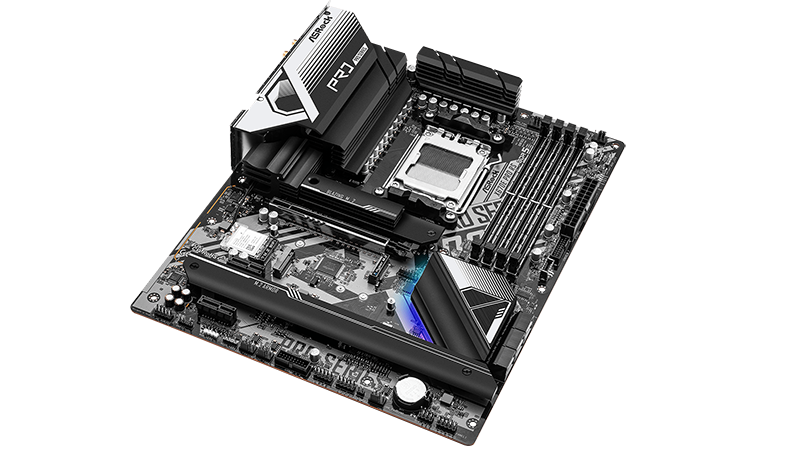
Socket: AMD Socket AM5
CPU compatibility: AMD Ryzen 7000 desktop processors
Form factor: ATX
Memory support: Up to DDR5-6600+ (OC), Up to 128GB
Storage: 5x M.2; 6x SATA
USB: Up to 1x USB 3.2 Gen2x2, 2x USB 3.2 Gen 2, 8x USB 3.1 Gen 1, 8x USB 2.0
Display: 1x HDMI 2.1, 1x DP 1.4
Networking: Wi-Fi 6E; Realtek 2.5G LAN
Audio: Realtek ALC897 7.1 Channel HD Audio
Price: $279 / £320 / AU$569
The ASRock X670E Pro RS isn’t what you'd call a beautiful board, but I like the silver and black combination, along with the fonts atop the M.2 heatsinks. There's a little bit of RGB lighting flair underneath the chipset heatsink, however. And, if you love your RGB lighting, there are three ARGB headers plus an additional non-addressable one.
ASRock includes a graphics card support device that mounts to two of the motherboard screw holes. That's handy if you plan to buy a monster sized graphics card. Yes, I'm looking at you, chonky RTX 4090.
The board includes five M,2 slots, once of which is a PCIe 5.0 slot cooled by a chunky heatsink. You'll still want to have decent case airflow though as M.2 heatsinks adjacent to a graphics card can actually absorb heat if neglected. I would not recommend using the middle two slots if you're using a gaming GPU. Use the two at the bottom of the board before those middle two.
Rounding out the storage support are six SATA ports.

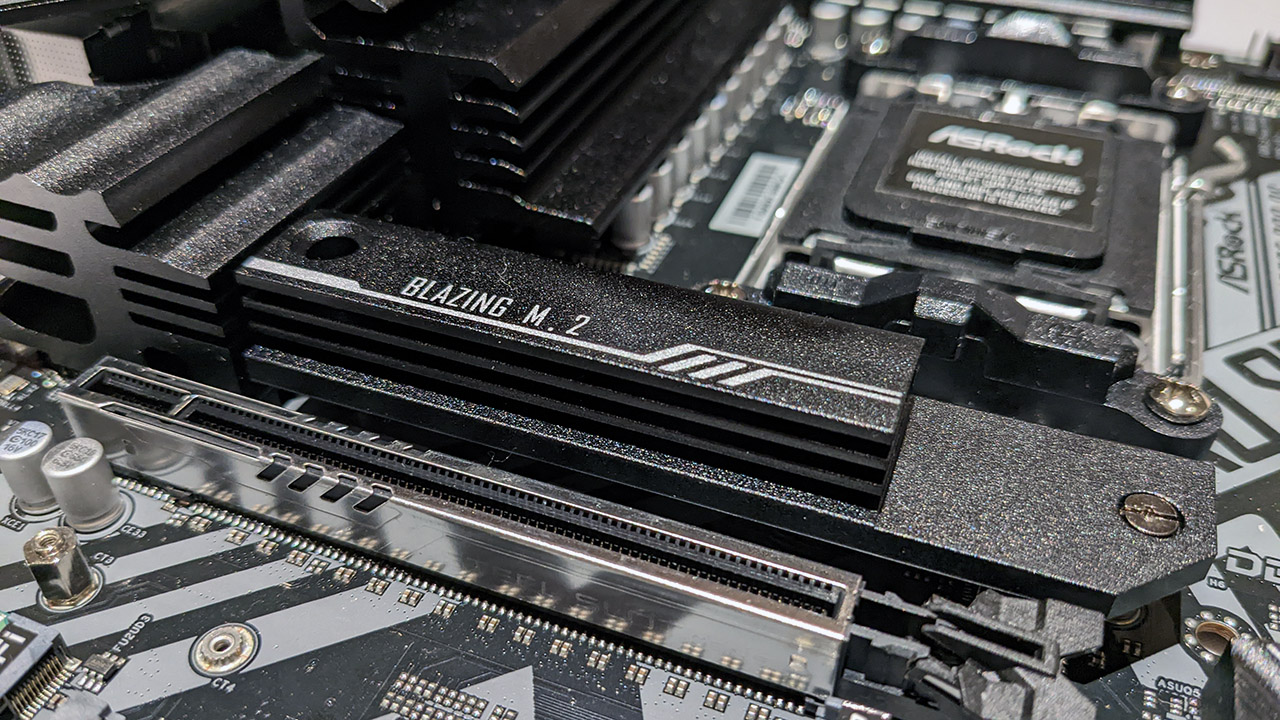
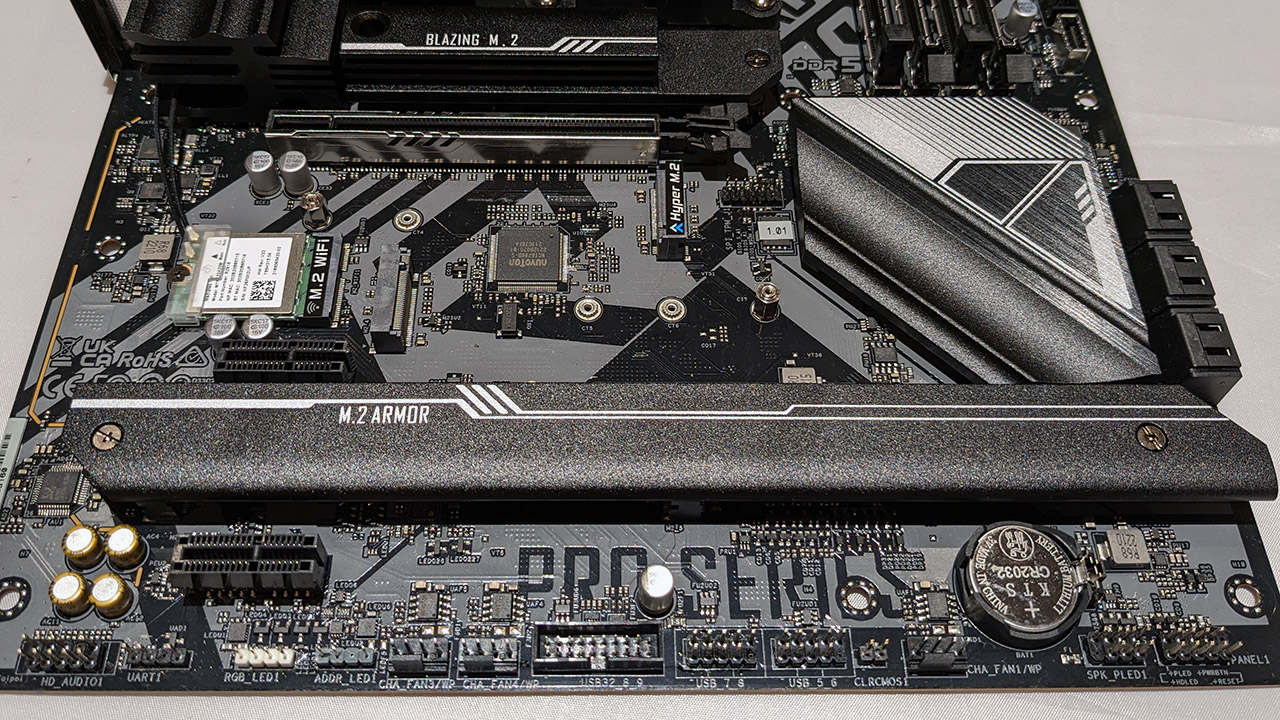




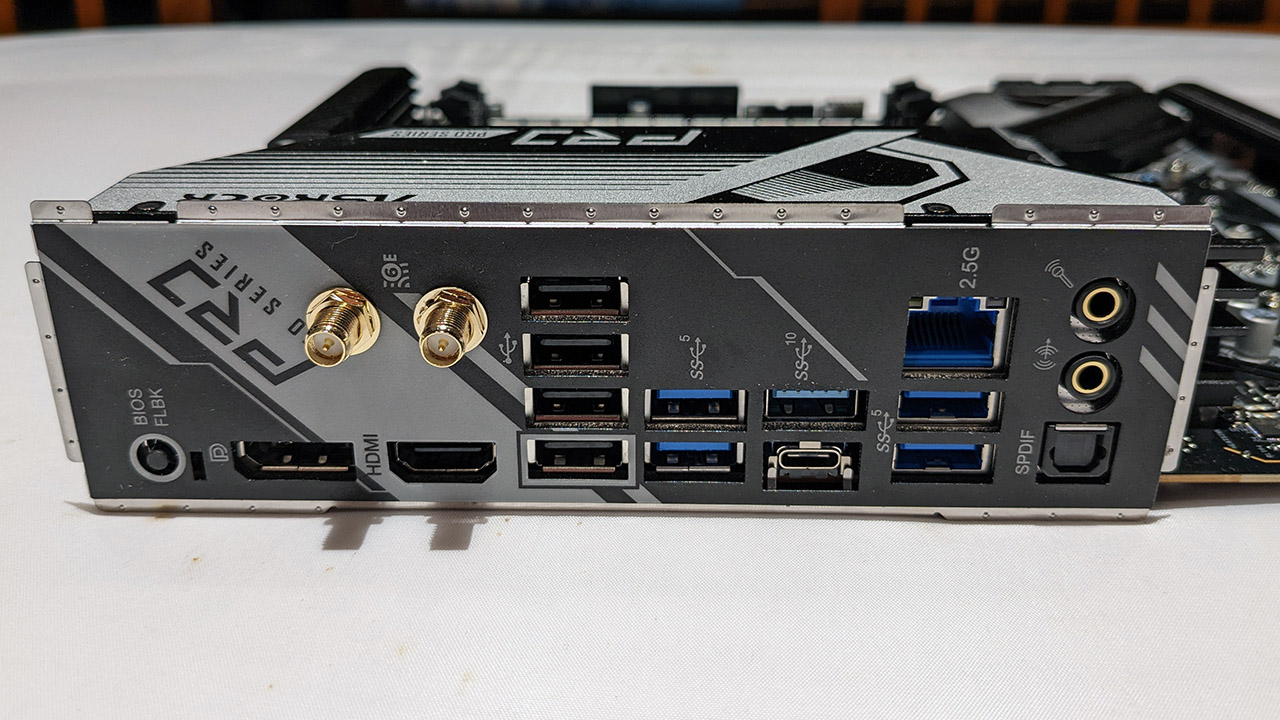
The VRM is adequate, if nothing special, though you wouldn't expect ASRock to include everything a high-end board has. A 14+2+1 phase solution is enough to power a 7950X without issue. The board includes 4+8-pin CPU power connectors.
The heatsinks are good for an 'entry level' X670 board. Running a 7950X under a sustained all core load, they were merely warm to the touch.
The I/O at the rear is excellent for a board at this price point. You get Wi-Fi 6E and Realtek 2.5G LAN which matches some much more expensive boards. Then you get DP 1.4 and HDMI 2.1 ports for use with the new integrated GPU capabilities of Ryzen 7000 CPUs.
The USB complement is good, with a total of ten rear ports. There are two 3.2 Gen 2 ports (one of which is Type-C) plus four 3.2 Gen 1 and four 2.0 ports. Internal headers can provide another eight ports plus the all-important USB 3.2 Gen 2x2 type-C.
The audio is an area that's less impressive. Realtek ALC892 is cheap, but an expensive controller and things like DACs are how board makers justify adding the big bucks for high end boards. As one of the cheaper boards offering a full X670E feature set, I understand ASRock having to make a few compromises.
ASRock's BIOS keeps things simple, the new releases really lower the boot times and unless you're into tweaking memory for hours on end looking for a few extra 3DMark 2001 frames, it includes everything a gamer needs, including the impressive ECO modes.
ASRock goes further and includes enhanced PBO modes that allow you to set maximum temperatures and voltages. These modes are a fantastic way to tune your system, allowing you to optimize for any type of cooler.
System Performance
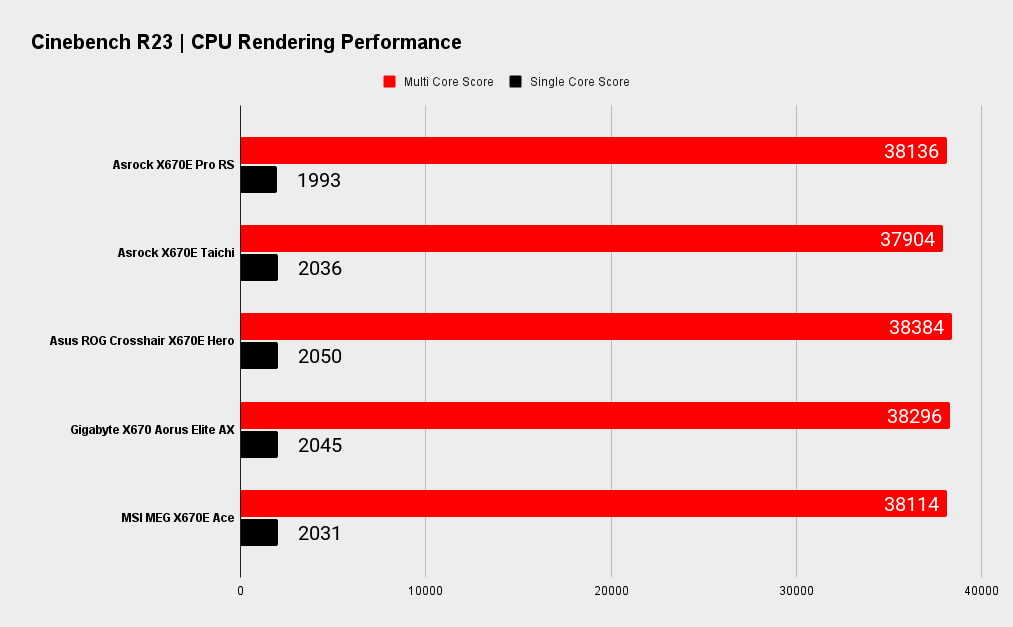

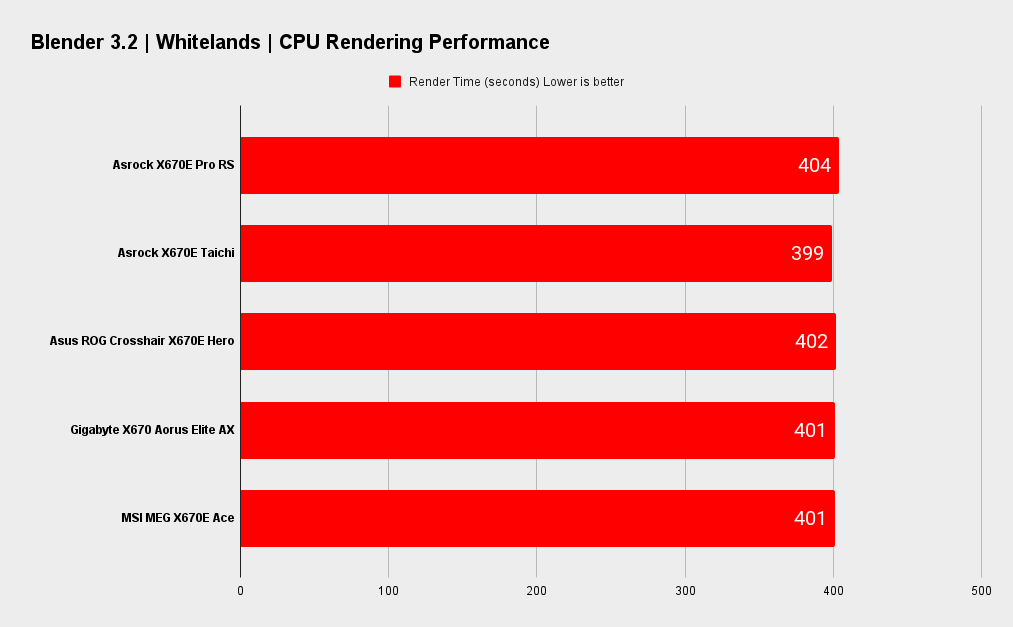
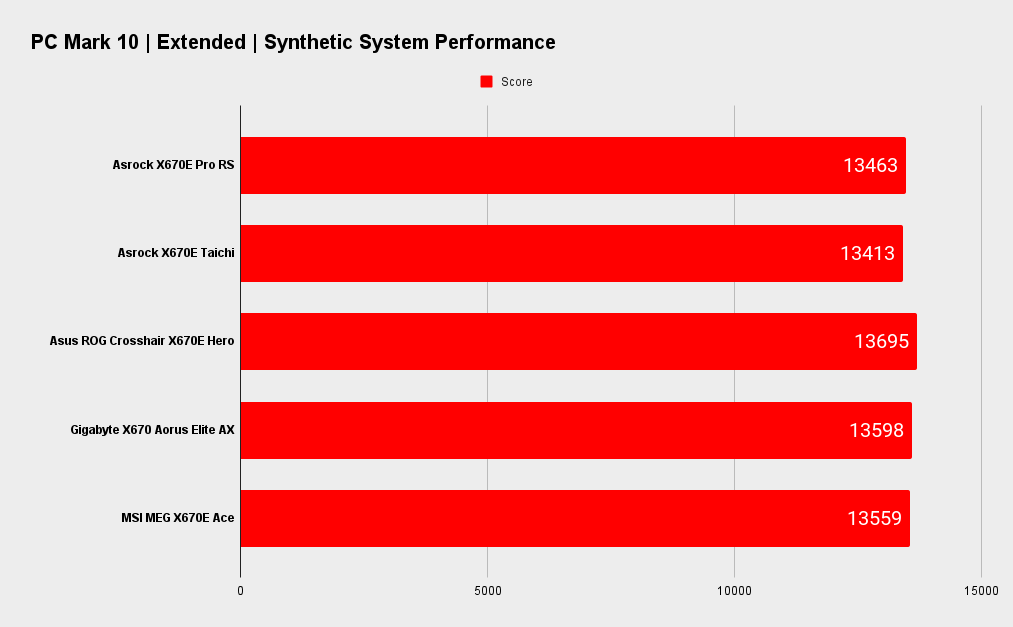
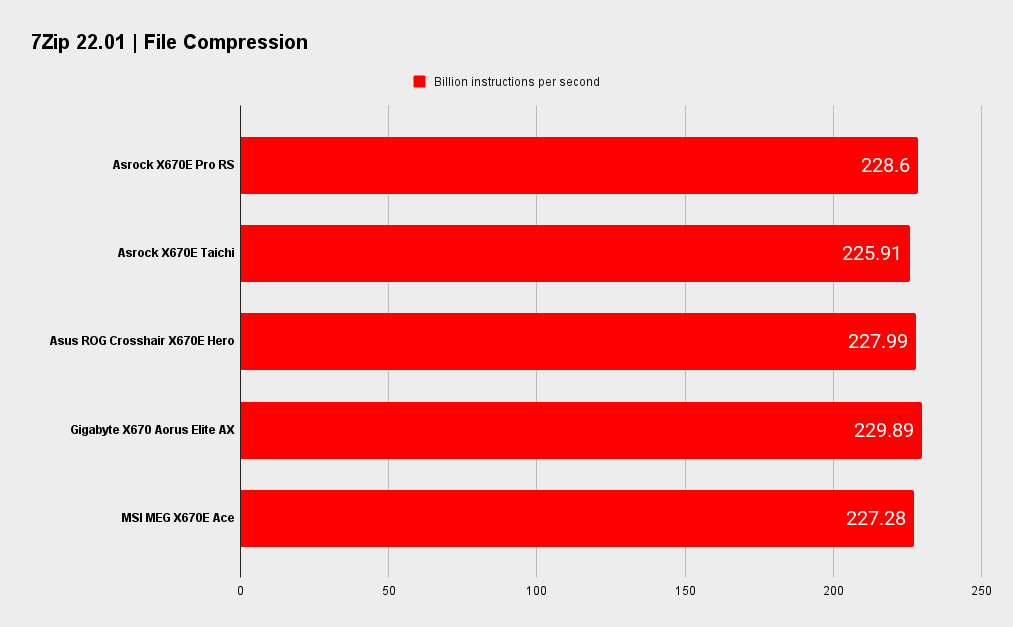
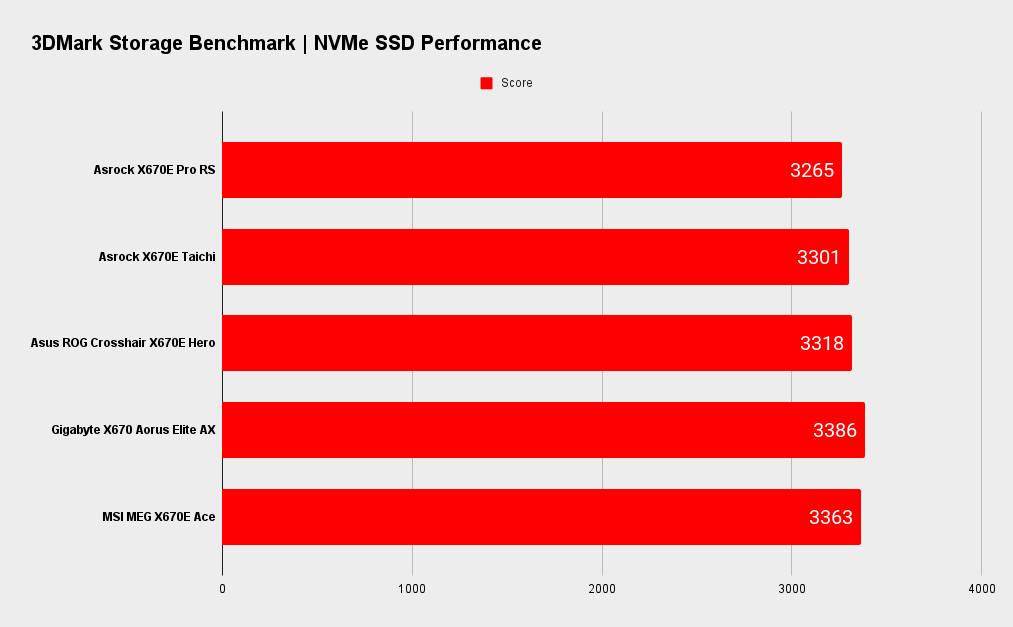
Gaming Performance
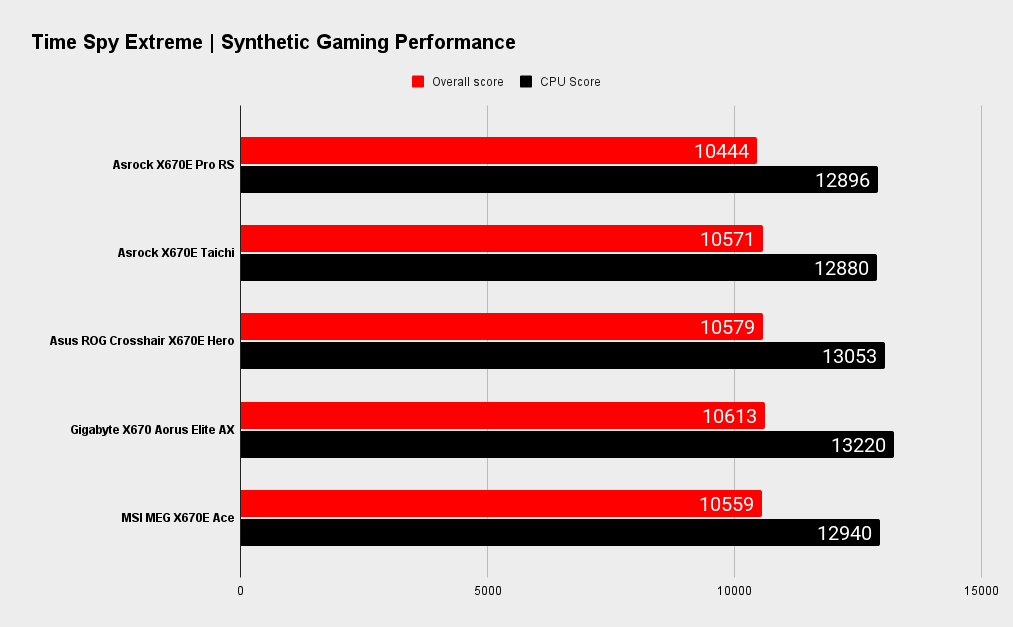
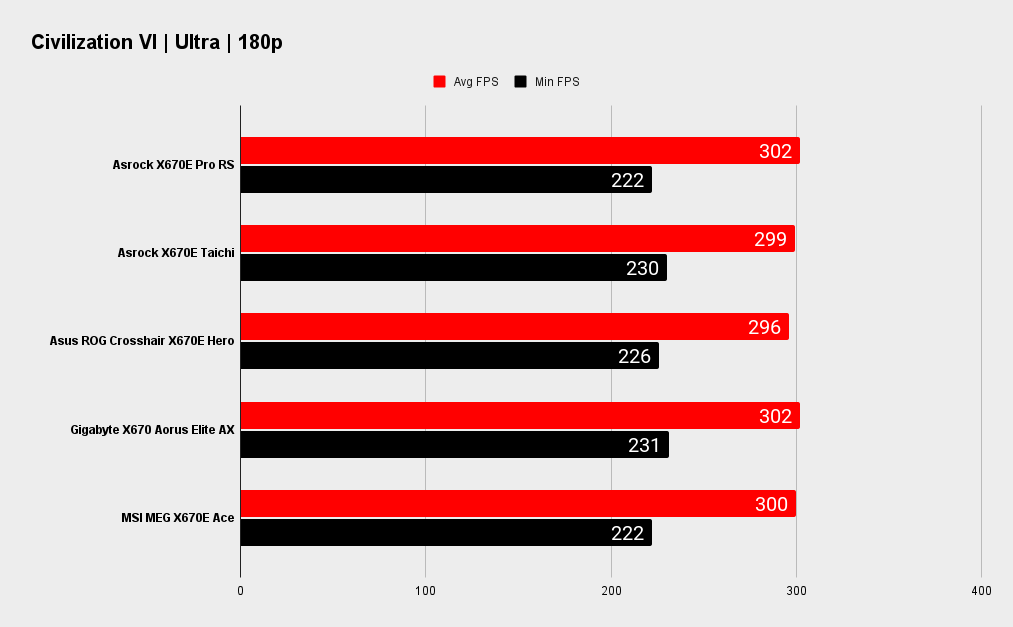
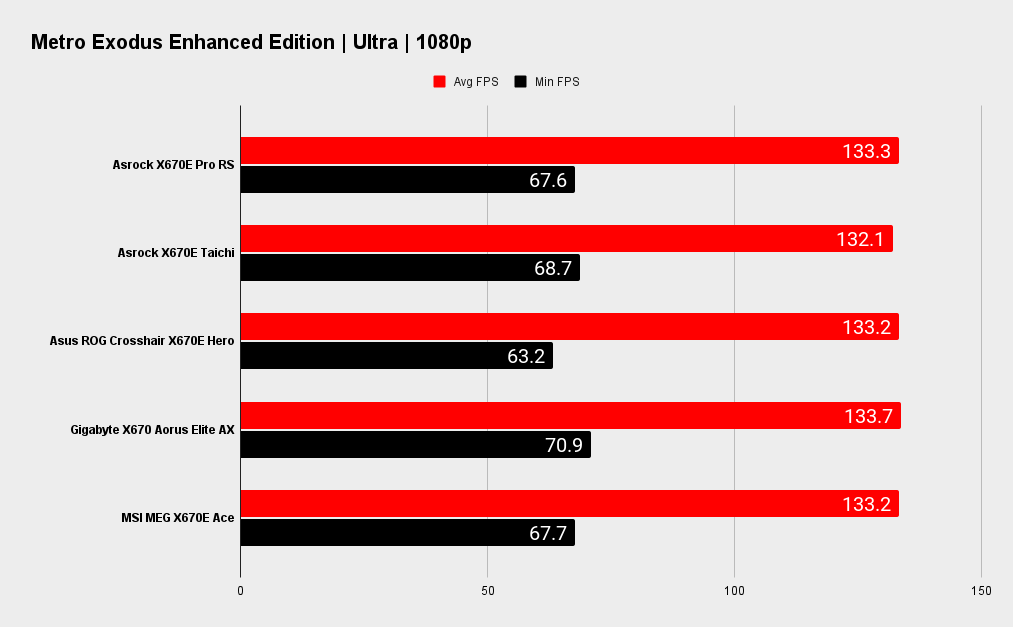

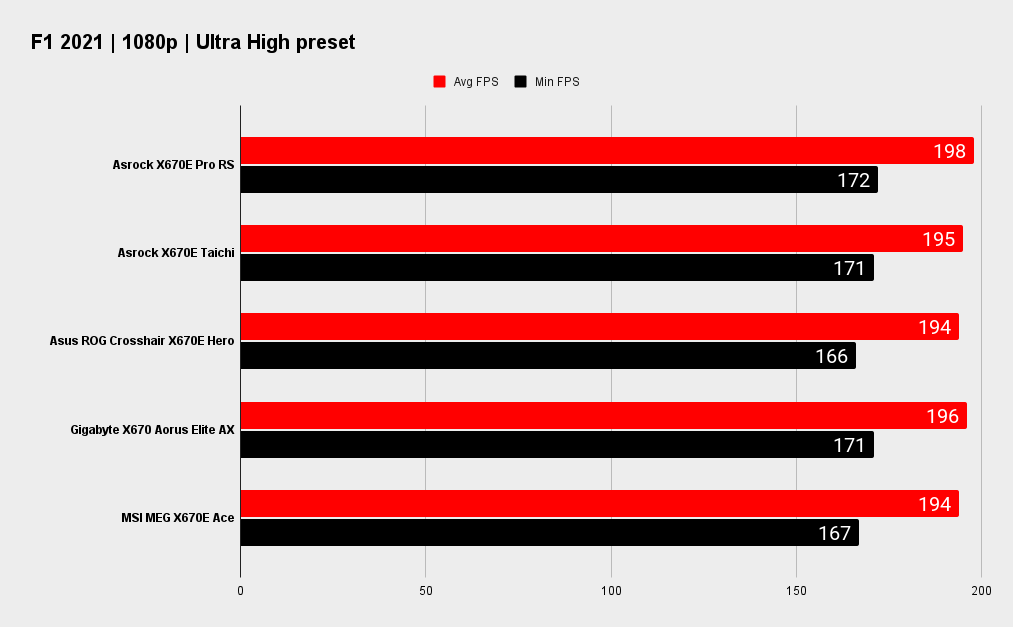
As we almost always say, using benchmarks as a differentiating factor between motherboards isn't usually very revealing unless there's something very wrong. The ASRock is perhaps a touch under the average of the boards I have tested so far, though when it comes to gaming, the differences are always within a margin of error.
CPU: AMD Ryzen 9 7950X
Graphics: Zotac GeForce RTX 3080 Ti AMP Holo
RAM: 2x 16GB G.Skill Trident Z5 DDR5-6000 C30
Storage: 2TB Seagate FireCuda 530
Cooling: Cooler Master PL360 Flux 360mm AIO
PSU: Corsair AX1000
Perhaps ASRock still has that last 1% of BIOS optimizing to do. I know for a fact some engineering teams are stretched thin with both AMD and Intel launching new platforms at the same time. If you buy an ASRock X670E Pro RS, it's definitely worth grabbing a new BIOS off the ASRock website before you do anything else with it.
However, at this early stage of the life of the AM5 platform, it feels remarkably mature in general. There's still some work to do to improve boot times, and we're yet to see PCIe 5.0 SSDs reach the market, but compared to some of the issues that first generation Ryzen had at the time of its launch, ASRock and AMD can't be too unhappy.
I'm also pleased to see BIOS flashback support on the Pro RS and seemingly all other AM5 motherboards. This means you'll be able to upgrade to a future CPU without needing a Zen 4 chip. Future and proofing are two dirty words, but in the case of AM5 at this time, relatively, it's as good as it gets.
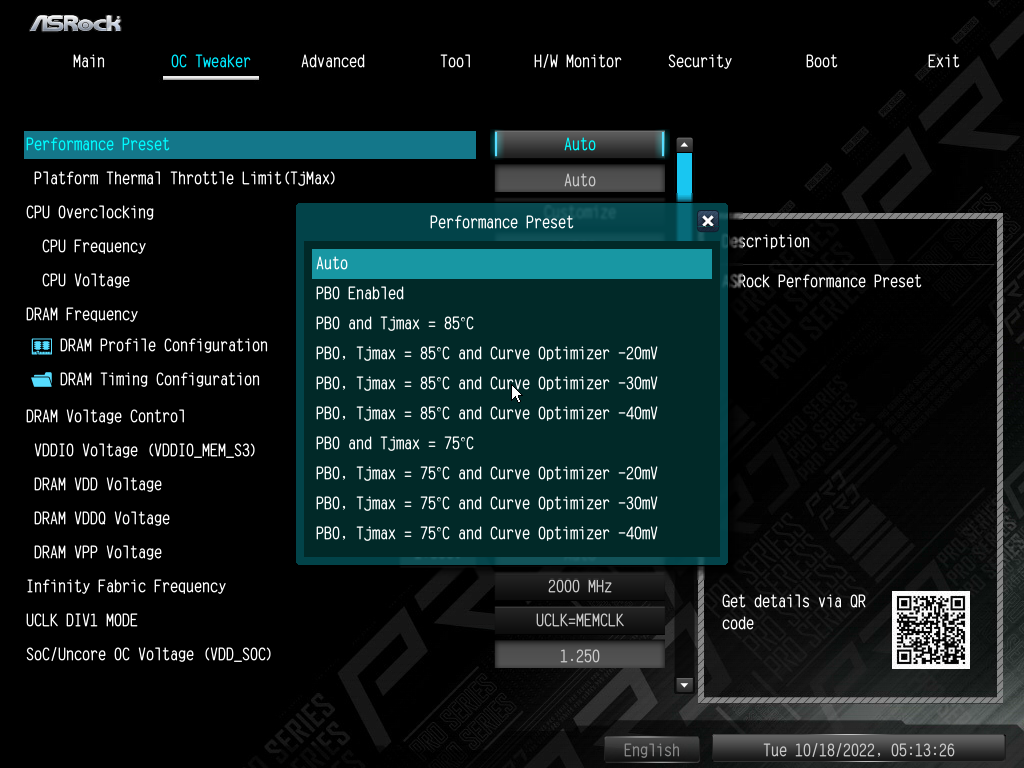


The ASRock X670E Pro RS is a generally plain motherboard. And there's nothing wrong with that at this price point. If you're a gamer who sticks your PC under the desk, out of sight and mind, then there's no need for you to spend money on bling.
It's proof you don't have to spend loads of money on an expensive motherboard. Saving a couple of hundred dollars and putting it towards a faster CPU or better graphics card will deliver actual performance gains. Unless you need things like USB 4, 10G LAN or multiple PCIe 5.0 SSD support, you don't really lose all that much compared to more expensive boards.
What it does do is deliver the core X670E feature set with no fuss. You get PCIe 5.0 graphics card and SSD support, Wi-Fi 6E, a capable VRM and presumably you'll be able to drop a future Ryzen 8000 or 9000 CPU in with just a BIOS update.
The ASRock X670E Pro RS is proof you don't need to spend loads of money on an expensive motherboard.
So, if the asking price of X670E boards in the region of $600 / £600 / AU$1,000 or more leaves you incredulous, a board like the ASRock X670E Pro RS is one you should consider. But don't forget B650 and B650E too, B650E in particular offers many of the same features at an even lower price point.
Throw in a 7600X with a RTX 40 or Radeon RX 7000 card, and 32GB of DDR5 and you've got a capable gaming system on your hands, but even better, you'll be able to upgrade your components for years to come. When you look at it in those terms the ASRock X670E Pro RS offers excellent value, and that's something that can't be said for too many AM5 motherboards.
The ASRock X670E Pro RS won’t win ANY popularity contest, but as a no fuss board that delivers the core X670E forward looking feature set, it's a smart option for users on a budget..

Chris' gaming experiences go back to the mid-nineties when he conned his parents into buying an 'educational PC' that was conveniently overpowered to play Doom and Tie Fighter. He developed a love of extreme overclocking that destroyed his savings despite the cheaper hardware on offer via his job at a PC store. To afford more LN2 he began moonlighting as a reviewer for VR-Zone before jumping the fence to work for MSI Australia. Since then, he's gone back to journalism, enthusiastically reviewing the latest and greatest components for PC & Tech Authority, PC Powerplay and currently Australian Personal Computer magazine and PC Gamer. Chris still puts far too many hours into Borderlands 3, always striving to become a more efficient killer.
